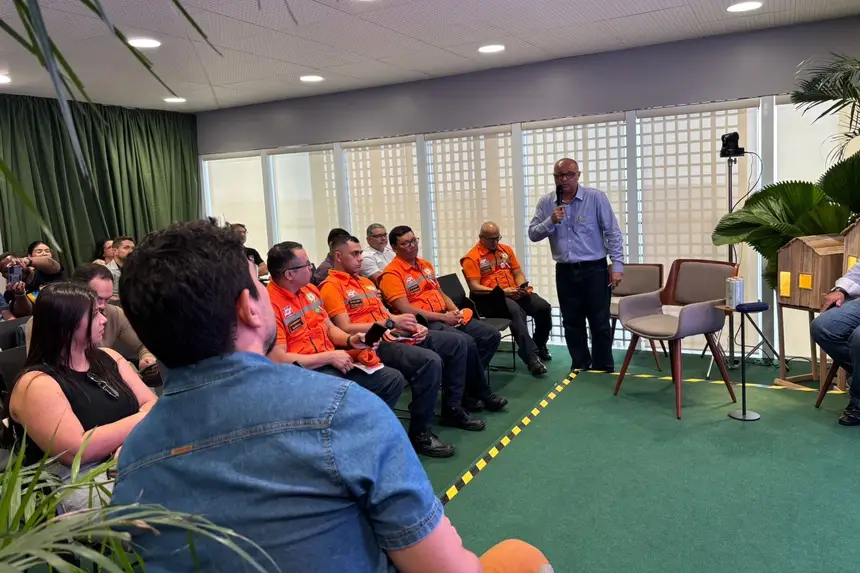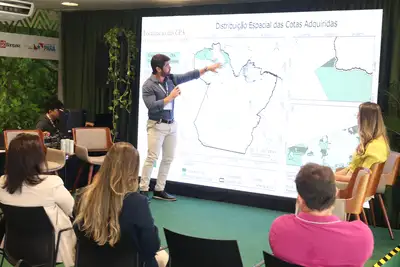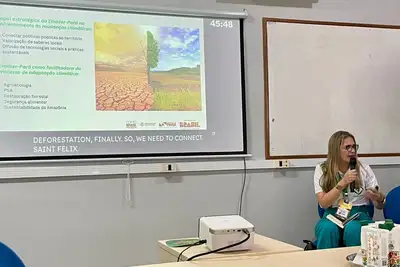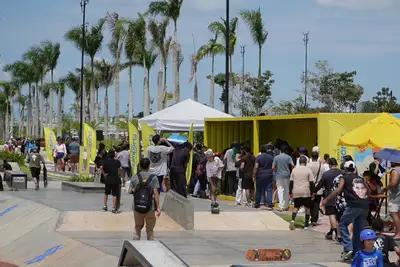At COP30, Semas highlights environmental monitoring actions to strengthen climate mitigation in Pará
Panel highlights Pará's tools to prevent risks and reduce impacts of natural disasters

During the panel "Hydrometeorological Monitoring and Air Quality conducted by the State of Pará, as a tool for preparation, mitigation of impacts, and risk reduction in the face of natural disasters," held as part of the Pará Pavilion program at the 30th Conference of the Parties (COP30) in Belém, the State Secretariat for Environment, Climate and Sustainability (Semas) emphasized the importance of its environmental monitoring tools and products for planning and managing crises arising from extreme climate events.
The panel presentation encompasses various areas and focuses especially on three fundamental pillars: hydrometeorological monitoring, which is the monitoring of weather, climate, and river levels, including issues of flooding and drought, and river levels, crucial for prevention; air quality: essential for public health, especially during burning periods; and fire hotspots: essential information for combating and preventing forest fires.
The information generated by the systems is essential and used from environmental planning to management during extreme events. "In the years 2023 and 2024, the Amazon region faced a severe drought, considered one of the most severe in recent history. This prolonged drought required intensified monitoring and strategic planning by Semas to reduce impacts," highlighted the Environmental Monitoring Coordinator of Semas, Antônio Sousa.

Important in disaster prevention, Semas monitoring indicated a worsening drought in eastern Pará, due to reduced rainfall and river levels, in the year 2024. The monitoring work is seen as a continuous effort to face climate change and ensure safety and planning in the region.
This year, Pará has established itself as a national example in advancing the mitigation of environmental impacts. In August 2025, for example, Pará achieved one of the best results in combating fire, recording a 90.5% reduction in forest fire hotspots compared to the same month last year, according to data from the National Institute for Space Research (Inpe).

These, among other positive results achieved, are due, beyond the constantly conducted hydrometeorological monitoring, to the strengthening of command and control operations carried out by the State government. Combining all actions, state monitoring and combat actions play a fundamental role in achieving positive performance.
Text: Vitor Hugo Ribeiro/ Ascom Semas










